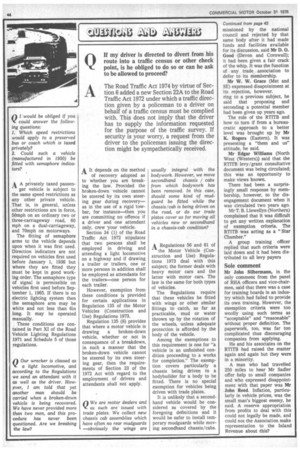Q I would be obliged if you V could answer the
Page 46

If you've noticed an error in this article please click here to report it so we can fix it.
following questions: 1. Which speed restrictions would apply to a preserved bus or coach which is taxed private/y?
2. Could such a vehicle (manufactured in 1950) be fitted with semaphore indicators?
A A privately taxed passen ger vehicle is subject to the same speed restrictions as any other private vehicle. That is, in general, un:ess other restrictions are in force, 50mph on an ordinary two or three-carriageway road, 60 mph on a dual-carriageway, and 70mph on motorways.
The fitting of semaphore arms to the vehicle depends upon when it was first used. Direction indicators are not required on vehicles first used before January 1, 1936 but where they are fitted they must be kept in good working order. The semaphore type of signal is permissible on vehicles first used before September 1, 1965. If there is no electric lighting system then the semaphore arm may be white and not less than 6in long. It may be operated manually.
These conditions are contained in Part XI of the Road Vehicle Lighting Regulations 1971 and Schedule 5 of those regulations.
































































































